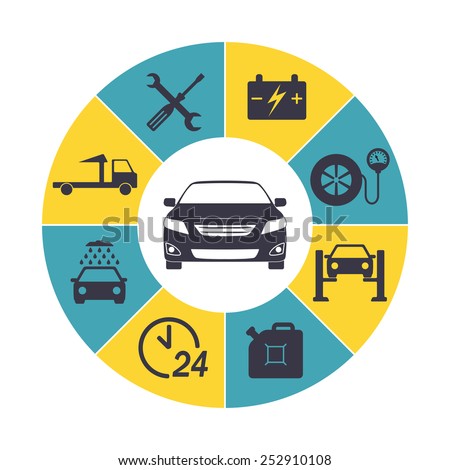Master The Art Of Comprehending Vehicle Warning Lights And Face Prospective Challenges With Assurance
Master The Art Of Comprehending Vehicle Warning Lights And Face Prospective Challenges With Assurance
Blog Article
Authored By-Ditlevsen Kruse
When you're behind the wheel, those little warning lights on your car's control panel can be quite difficult. What do they suggest, and should you be concerned? Understanding these signals is critical for your automobile's health, however it doesn't need to be a difficult task. By decoding the mystery behind each light, you'll be outfitted to deal with possible issues efficiently and keep your automobile running smoothly. So, next time a warning light flashes, don't panic - arm on your own with understanding and take control of the situation.
Relevance of Vehicle Caution Lights
Understanding the relevance of your auto's warning lights is critical for maintaining your lorry's health and wellness. These lights work as your cars and truck's communication system, signaling you to possible problems that might threaten your security on the road or cause costly repair services if overlooked. By taking notice of these warnings, you can attend to issues early and avoid further damages to your vehicle.
Disregarding alerting lights can lead to significant consequences, such as engine failure, brake malfunctions, or even accidents. These lights are developed to inform you of concerns ranging from low tire pressure to engine breakdowns, giving you the opportunity to take action before the scenario worsens. On a regular basis checking and recognizing these warnings can save you time, money, and guarantee your safety while driving.
In addition to keeping you safe, responding without delay to advising lights can likewise assist lengthen the life expectancy of your cars and truck. By attending to issues beforehand, you can avoid little troubles from escalating into significant repairs, ultimately conserving you time and money in the future. Remember, your cars and truck's caution lights are there for a reason - don't disregard them!
Common Caution Lighting and Meanings
When it pertains to driving your cars and truck, recognizing common warning lights and their definitions is essential for your security and automobile upkeep. Below are a few common caution lights you might encounter:
1. ** Examine Engine Light **: This light indicates a problem with your engine. https://brakeshopnearme40628.theisblog.com/30149202/the-professional-overview-to-car-detailing-basic-steps-for-achieving-a-spectacular-shine could be something small like a loose gas cap or something much more severe like engine misfiring.
2. ** Battery Light **: This light signals a problem with your vehicle's charging system. https://car-oil-change95162.bloggerswise.com/36669258/torn-between-taking-care-of-car-repairs-independently-or-involving-expert-solutions-the-surprise-costs-and-effects-could-be-unexpected-necessitating-avital-choice can indicate a defective battery, generator, or various other related parts.
3. ** Oil Stress Light **: When this light comes on, it suggests your engine might be running low on oil or experiencing low oil stress, which can result in engine damages otherwise addressed without delay.
4. ** Brake System Light **: This light shows an issue with your braking system. It could mean reduced brake fluid degrees or an issue with the brake system that needs immediate focus.
Comprehending these common caution lights will certainly help you recognize potential problems beforehand and protect against more significant problems down the road.
Exactly how to Respond to Caution Lighting
In case a caution light brightens on your auto's control panel, it's essential to react immediately and appropriately. When a caution light comes on, the initial step is to consult your owner's handbook to recognize the certain problem shown by the light.
Some lights need prompt focus, while others might indicate a much less immediate matter. If the warning light is red or flashing, it's commonly an indicator of a significant issue that needs immediate action. In such situations, it's suggested to pull over safely, turn off the engine, and seek specialist assistance.
For yellow or orange caution lights, while they might not require immediate attention, it's still essential to resolve the underlying problem promptly to stop additional damages. Routine upkeep and examination can assist avoid cautioning lights from beginning suddenly.
Verdict
To conclude, understanding your auto's caution lights is critical for keeping your automobile's health and safety. By frequently inspecting and replying to Suggested Resource site , you can resolve potential concerns early and protect against pricey repairs or safety threats. Bear in mind to consult your owner's manual for info on various warning lights and constantly take immediate action for red or flashing lights. Remain positive and keep your car running efficiently!
